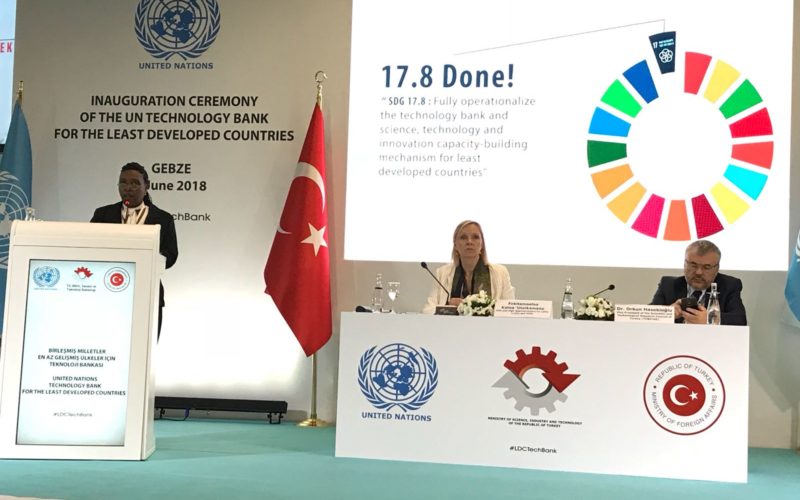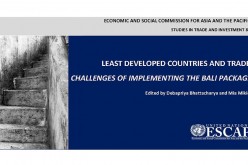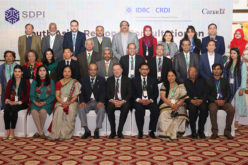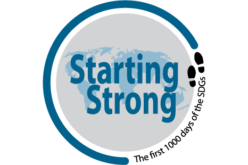Interview with Ms Bitrina Diyamett, founding/executive director of the Science, Technology and Innovation Policy Research Organization (STIPRO), Tanzania
The United Nations recently established a “technology bank” (TB) for least-developed countries (LDC). One of its aims is to strengthen the science, technology and innovation capacity of LDCs, including better management of intellectual property rights. This is part of the effort to ‘leave no one behind’ by the UN Agenda 2030.
Southern Voice interviewed Ms Bitrina Diyamett, who was appointed by the UN Secretary General as a member of the Governing Council of the UN Technology Bank (TB).
Ms Diyamett, why was there a need for a technology bank and why now?
The major purpose of and need for the UN Technology Bank (TB) for Least Developed Countries (LDCs) is to build and enhance these countries’ capacities in science, technology and innovation (STI). This will enable them to achieve sustainable development in line with the Agenda 2030. The bank starts from the premise that these countries are poor – to a large extent – because they lack capabilities in science, technology and innovation. Therefore, based on the UN principle of “leaving no one behind” in sustainable development, there is no other alternative of achieving the Agenda, but by building such capabilities.
From my personal perspective, this principle can only be achieved if sustainable development is itself correctly understood. Currently, sustainable development is almost exclusively understood in terms of environmental protection. This leads to a major focus for STI capacity building in LDCs on environmental issues. But in fact, the major focus should be on social and economic development, without forgetting environmental topics, of course. Remember that agenda 2030 also recognizes the primary role of growth in eradication of poverty (goal 8). And sustainable and inclusive growth without capabilities in STI, is unthinkable. Being weaker partners in international negotiations, the TB is supposed to act as the voice of the LDCs: to argue their case – especially a need for growth – in the international arena.
You mention the Agenda 2030. What is the bank’s relation to it?
In relation to the Agenda 2030, the idea of the TB’s establishment can be traced back to the 2011 Istanbul Action Programme. It called for the establishment of a technology bank and a science, technology and innovation supporting mechanism dedicated to LDCs. The establishment of the TB was subsequently confirmed in the 2015 Addis Ababa Action Agenda, and also in the Sustainable Development Goals. It is specifically mentioned in target 17.8, of Goal 17. The bank’s establishment also marks the first SDG target to ever be achieved. We are very proud of that.
What are the three main goals of the bank in the first three years?
As indicated in the SDGs, Goal 17 is about Partnerships – both at the national and international level. Therefore the major intention of this Goal – as far as STI is concerned – is on partnership in international technology transfer as a way of building technology capacity of LDCs. But successful international technology transfer presupposes some level of local absorptive capacity. So the top priority in the TB Action Plan for the first 3 years is to strengthen some primary absorptive capacity of these countries, focusing on selected elements of the national innovation systems. Priority activities towards this include:
1) Reviews of National STI system with the purpose of establishing collaborative innovation networks that will enable LDCs scientists, technologists, the private sector, and relevant public institutions to connect and collaborate among themselves. This should enable technology transfer, national and international; 2) Carry out technology needs assessment to identify gaps and related appropriate interventions; 3) The bank will seek international partnerships to assist LDCs in building their STI capabilities.
So will the bank facilitate technology transfer?
Yes! Both at the local and international level. Some initial activities in the first 3 years include helping LDC’s stakeholders identify, access and use free patent information. This is critical for identifying existing technologies for potential transfer.
Actually, facilitating international technology transfer is the primary goal of the bank. But for that, it needs to prepare fertile ground for successful technology transfer through improving the absorptive capacity. It is the reason some major initial activities are on improving absorptive capacity.
When can we expect to see first results?
Given the current Bank’s Action Plan, I think within 18 months from today. We will start seeing first intermediate outcome such as Action Programs for capacity building in the first five selected countries. These are: Guinea, Haiti, Sudan, Timor-Leste, and Uganda. Short-term achievements might also include more finance being mobilized for the bank and its activities.
Which organizations will be the bank’s main partners?
Main partners of the TB are those dealing with capacity building issues for social and economic development of LDCs, specifically STI capacity.
At the UN level these include, but are not limited to: Member States and the UN system generally and UNIDO, UNCTAD, and UNESCO, more specifically.
At the Regional level they include regional STI capacity building organizations such as New Partnership for Africa’s Development (NEPAD), African Capacity Building Foundation (ACBF) and the African Development Bank (AfDB).
At the national level, they include the governments of LDCs themselves, the country’s private sector, foreign investors, researchers, think tanks and other NGOs, and development partners.
Thank you for the interview Ms Diyamett.
Interview by Gabriela Keseberg Dávalos.
7,883 total views, 4 views today









